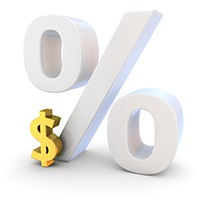Last updated: May 08 2014
Using Marginal Tax Rate in Measuring Tax-Efficiency

Your marginal tax rate is linked to your tax bracket and analyzes how much you’ll pay on the next dollar you earn from various income sources. This is an important concept too—not all income sources are taxed alike.
A taxpayer’s MTR (Marginal Tax Rate) is a useful tool in measuring tax-efficiency of both actively and passively earned income sources. It will tell you how much tax you’ll pay on the next dollar you plan to earn, while measuring the effect of that income on your eligibility for tax credits and social benefits delivered through the tax system.
This is different from the effective tax rate, which reflects the actual tax rate applied to your income after “progressivity” is taken into account. In Canada we have a progressive tax system, which means, the more you earn the more you pay and the less you receive from income-tested social benefits.
To compute your marginal tax rate, you need to understand that your income sources will be classified into several broad categories for tax purposes. For example:
Ordinary income is fully taxable and includes income from employment, pensions and interest. It may also include alimony and certain social benefits like Employment Insurance, and net rental income—what’s left after allowable deductions.
Income from self-employment is reported on a net basis—what’s left after revenues are reduced by allowable deductions.
Capital gains are reported upon the disposition (sale or transfer) of an asset. Only half those gains, net of losses, are reported on the return. Sometimes, gains can be avoided when certain properties are donated to charity. Other gains may qualify for specific exemptions from tax (the Capital Gains Deduction, for example). Capital gains that are not exempt have a marginal tax rate that is one-half the rate applicable to ordinary income or net self-employment income.
Dividends are the after-tax distribution of profits from private or public corporations to shareholders. Reporting them involves an integration of the corporate and personal tax systems, the end result of which is a preferential tax rate for the dividend recipient. As a general rule, dividend income is taxed at a lower marginal rate than ordinary income. The marginal tax rate on eligible dividends is lower than on small business dividends but the rates of taxation on dividends varies widely by province.
When you know your marginal tax rate on the next dollars you earn, you can make better choices about your income sources and tax-preferred investments to get the after tax results you want on both income and capital. These results will vary by province.
The Marginal Tax Rate Calculator is one of 14 in the Knowledge Bureau Toolkit. Try a free trial today.
